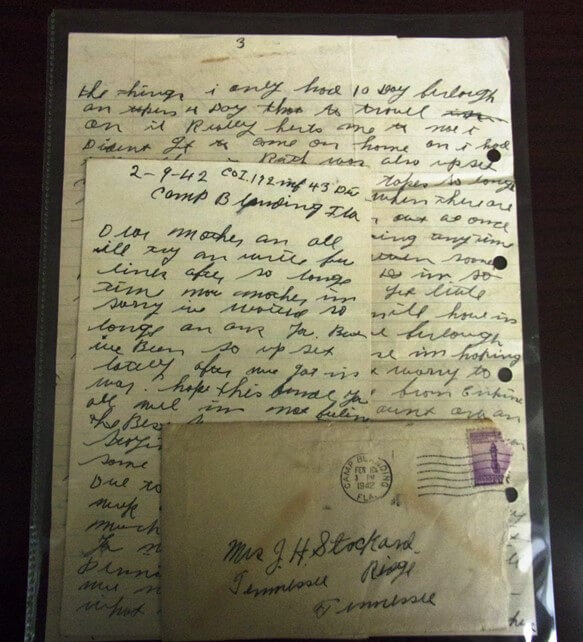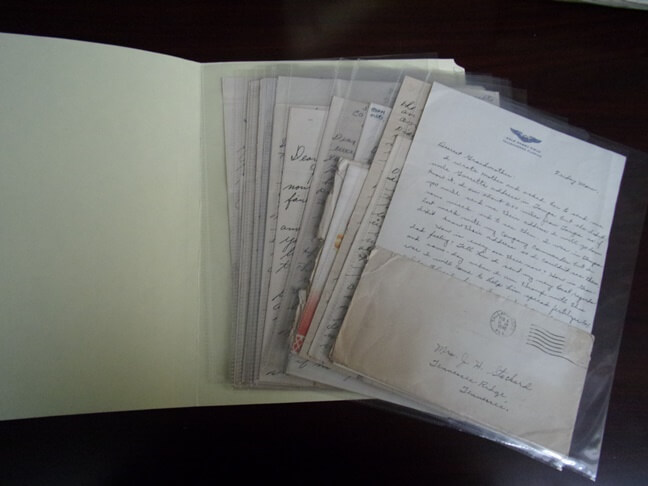
Preserving old family letters is one of the best things you can do to be sure their precious content is available to future generations. Follow these easy steps from The Archive Lady, Melissa Barker, to organize and preserve the old correspondence in your family history archive.
Writing letters has become a thing of the past! If you are fortunate enough to have a collection of old family letters, you have a true treasure.
In addition to digitizing them, physically preserving them is one of the best things you can do to save the genealogical information contained in those old family letters. Here are some simple steps to preserve the old letters that you may have.
You can go by the date on the letter itself or by the postmark date on the envelope.
It is important to put your old letters in chronological order because sometimes there is information in those letters that continue from letter to letter and you want to make sure you read them in the order originally written.
If you have groups of letters from different events such as WWII letters, college letters, or vacation letters, you could group them together and then organize each grouping by date.

(Courtesy Houston County, TN. Archives.) Old letters like these need careful preservation.
Once you have put your letters in chronological order, it’s time to do some preservation work.
I am asked all the time about letters and whether to leave them folded and in their envelopes. I can tell you that all archivists remove the letters from the envelopes and archive them unfolded. The creases made by folding and unfolding letters can cause damage and eventually those creases get weak and can cause the letters to tear into pieces. It is always best to unfold old family letters.

The term encapsulates means “to enclose something or to completely cover something.”
Now that you have unfolded and flattened your letters, you will want to encapsulate them in archival safe sleeves that can be purchased at any online archival supply store. Look for reputable preservation supply companies like Gaylord.

An encapsulated letter
Be sure to put the envelope with the letter in the same sleeve so that it doesn’t get lost or mixed up with another letter that it doesn’t belong to. When you’re working with many letters in a collection, the letter can easily be separated from the envelope. But envelopes may include crucial details such as dates, the identity and address of the writer, and interesting postmarks, so you want to keep them together.
After you have put your letters in chronological order, unfolded them and encapsulated them, it is now time to file and store them.
Archivists prefer to put their encapsulated letters into archival file folders and then into archival boxes, being sure to keep the chronological order intact. (Click here for Gaylord’s Family Archives Document Preservation Kit, complete with archival folders and an archival box.)
This process gives you three layers of protection for your letters to ensure they are completely preserved and protected from bugs, dust, and anything else that could get to them and damage them.
Following these guidelines to preserving your family letters will ensure they are protected and saved for you to enjoy and for your future descendants to enjoy!

Old letters can fall prey to many unfortunate situations. Ink can fade and paper can crumble. If this happens, the messages on your old letters may eventually be lost, despite your best efforts. It’s also possible that the entire file folder full of the original letters could be lost, damaged, or even destroyed!
Digitizing your old family letters lets you digitally preserve the content for future generations. It’s the best way to added another layer of protection. Duplication is a fundamental key to preservation.
In the free Genealogy Gems Podcast episode 144, host and producer Lisa Louise Cooke talks with The Family Curator Denise Levenick about digitizing and organizing your family history. Click here to hear their conversation and start preserving your own family letters and other original documents.

As you can seem it’s actually pretty easy to preserve your old family letters. I encourage you to get started today so that you’ll never have regrets in the future.
Melissa Barker is a Certified Archives Records Manager, the Houston County, Tennessee Archivist and author of the popular blog A Genealogist in the Archives and an advice columnist. She has been researching her own family history for the past 27 years.
Images courtesy of Melissa Barker and Houston County, TN Archives.
Disclosure: As an Amazon Associate, Genealogy Gems earns from qualifying purchases. This article contains affiliate links and Genealogy Gems will be compensated if you make a purchase after clicking on these links (at no additional cost to you). Thank you for supporting Genealogy Gems!
Lisa,
I have all of my Uncle’s WWII letters to his future wife and her’s that answered them. They were written on what I used to call “onion skin paper”. The letters are in the envelopes that they have been in since the 1950s and seem to be very dry and brittle. I’m afraid they will crumble when I take them out of the envelopes. I have been told to hold them over steam to re-moisturize them. Is this safe? Will it make the ink run? Are there better alternatives?